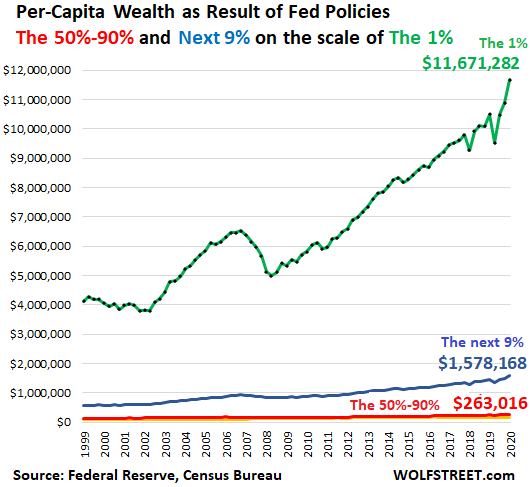I Now Track the Most Important Measure of the Fed’s Economy: the “Wealth Effect” and How it Impacts Americans Individually
The Fed provides the data quarterly, I dissect it at the stunning per-capita level.
The Federal Reserve is pursuing monetary policies that are explicitly designed to inflate asset prices. The rationalization is that ballooning asset prices will create the “wealth effect.” This is a concept Janet Yellen, when she was still president of the San Francisco Fed, propagated in a paper. In 2010, Fed Chair Ben Bernanke explained the wealth effect to the American people in a Washington Post editorial. And in early 2020, Fed Chair Jerome Powell pushed the wealth effect all the way to miracle levels.
Today we will see the per-capita progress of that wealth effect – what it means and what it accomplishes – based on the Fed’s wealth distribution datathrough Q4 2020, and based on Census Bureau estimates for the US population over the years. Here are some key results. At the end of 2020, the per-capita wealth (assets minus debts) of:
- The 1% = $11.7 million per person (green);
- The next 9% = $1.6 million per person (blue);
- The 50% to 90% = $263,016 per person (red line at the bottom).
- The bottom 50% = $15,027 per person. That amount of wealth is so small it doesn’t show up on this per-capita chart that is on a scale of wealth that accommodates the 1%.

The total population in 2020, according to the Census Bureau, was 330 million people. The 1% amount to 3.3 million people. Back in 2000, the population was 283 million people, and the 1% amounted to 2.8 million people. So the 1% has grown by 473,000 people because the population has gotten larger. And the 50% – the have-nots, as we’ll see in a moment – have grown by 24 million people.
…click on the above link to read the rest of the article…